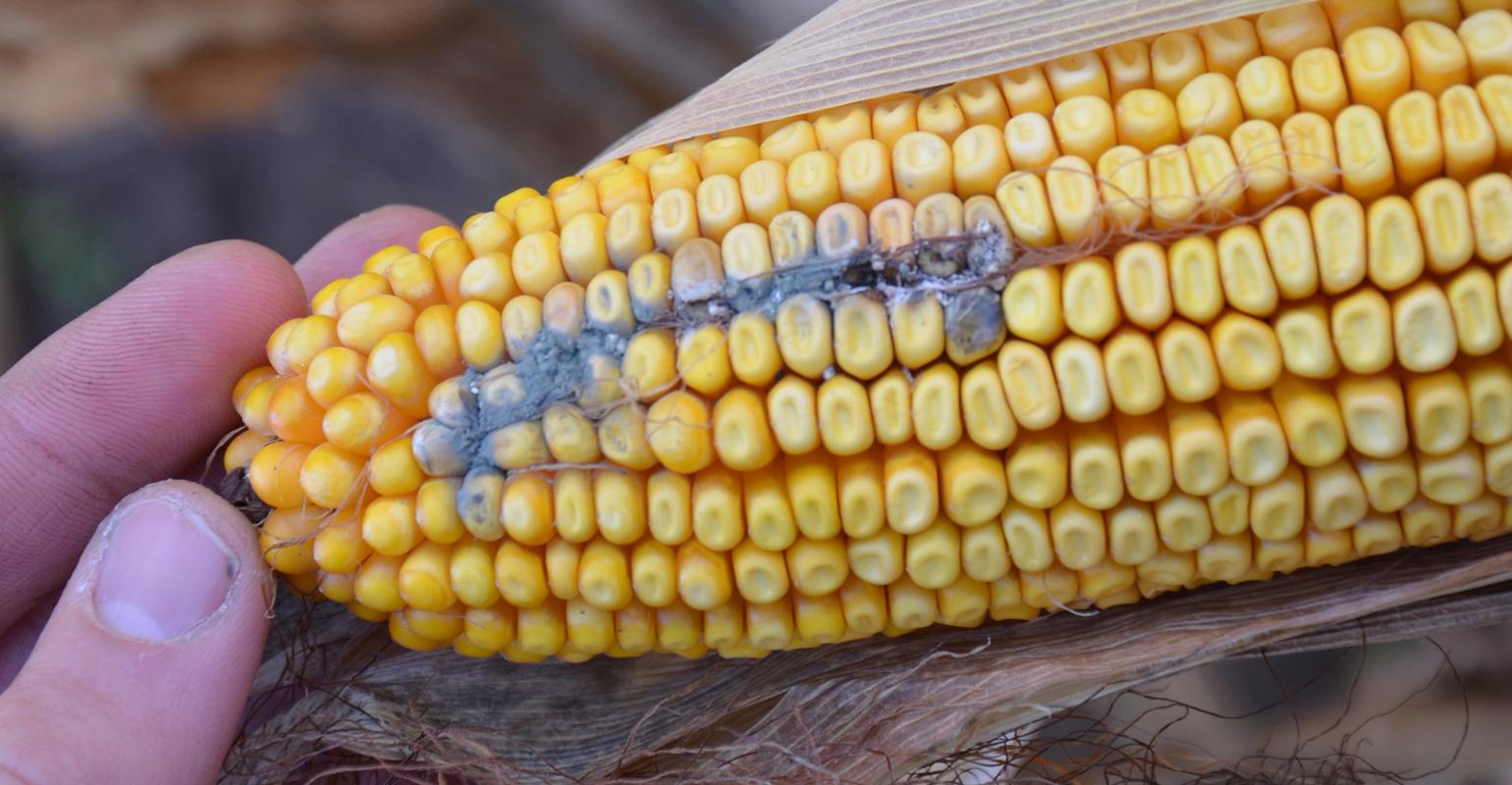Monitor corn for signs of stalk, ear rots

Corn Pest Beat: Careful scouting helps you identify which fields to harvest first.
Aug 05, 2020
What symptoms should I look for to tell if stalk or ear rot is starting in corn? When is it bad enough that I should mark that field to harvest soon?
The Indiana certified crop advisers panel answering this question includes Steve Gauck, regional agronomy manager for Beck’s, Greensburg; Andy Like, independent crops consultant, Vincennes; and Dan Ritter, agronomist with Corteva Agriscience, Rensselaer.
Gauck: Scouting is the key. Start by looking at stalks and leaves to see if any diseases have formed. Look for lesions on leaves and identify where they’re located. Look closely at the stalk, and pull away leaf sheaths, if needed, to see if you have stalk rots forming.
Once you’ve looked over the outside of the plant, cut open stalks to determine if any disease is starting there. Start at the bottom: Is the crown area solid and white or tan? If you see brown or black colors, you may have crown rot forming. As you move up the plant, look at nodes and the general color of the pith. If everything is white and firm, you’re in great shape. If you see discolored nodes, pith deteriorating or an off-color pith, target those fields for earlier harvest.
Shuck back a few ears and look at overall kernel health. Do you see molds forming between kernels? Check the ear from top to bottom, as different types of molds start at different locations.
Like: Look for prominent diseases during the season, such as northern corn leaf blight, gray leaf spot, southern rust, and any ear or stalk rots. Often, these diseases start as small, inconspicuous lesions that don’t draw much attention. As these diseases develop, they can destroy leaf area and reduce the ability of the plant to fulfill the carbohydrate demand of filling ears by reducing photosynthesis activity.
Whatever carbs the ear can’t get from a leaf, it will rob from the stalk. The result will be a weaker stalk that will be more subject to stalk rots and ultimately lodging. As the season progresses, a simple push test on mature corn will give you an idea of which fields to prioritize during harvest.
Ritter: First, I would look at fields with stress from either weather, foliar disease or insects. These fields tend to be more susceptible to stalk lodging. Depending on personal preference, do a pinch test on the lower third of the stalk or a push test. For a push test, simply walk down the row pushing stalks, and note how many don’t snap back. These tests will give you an indication of stalk integrity and strength.
Based on number of plants with weak stalks and how weak those stalks are, make decisions about scheduling harvest. Look for discolored stalks or husks. Prematurely dying plants are also a good indicator of pending harvest challenges. While looking for ear rot, peel back a solid sampling of ears to look for indications of ear molds. You’re looking for any kernel discoloration. It can be white, yellow, green, pink or blue. Each is indicative of a different ear mold.
It’s still hard to beat the Purdue University Corn and Soybean Field Guide to help identify ear rots. As you check ears for mold or perform a push test for stalk quality, take note of issues with weak shanks and ear droppage.

